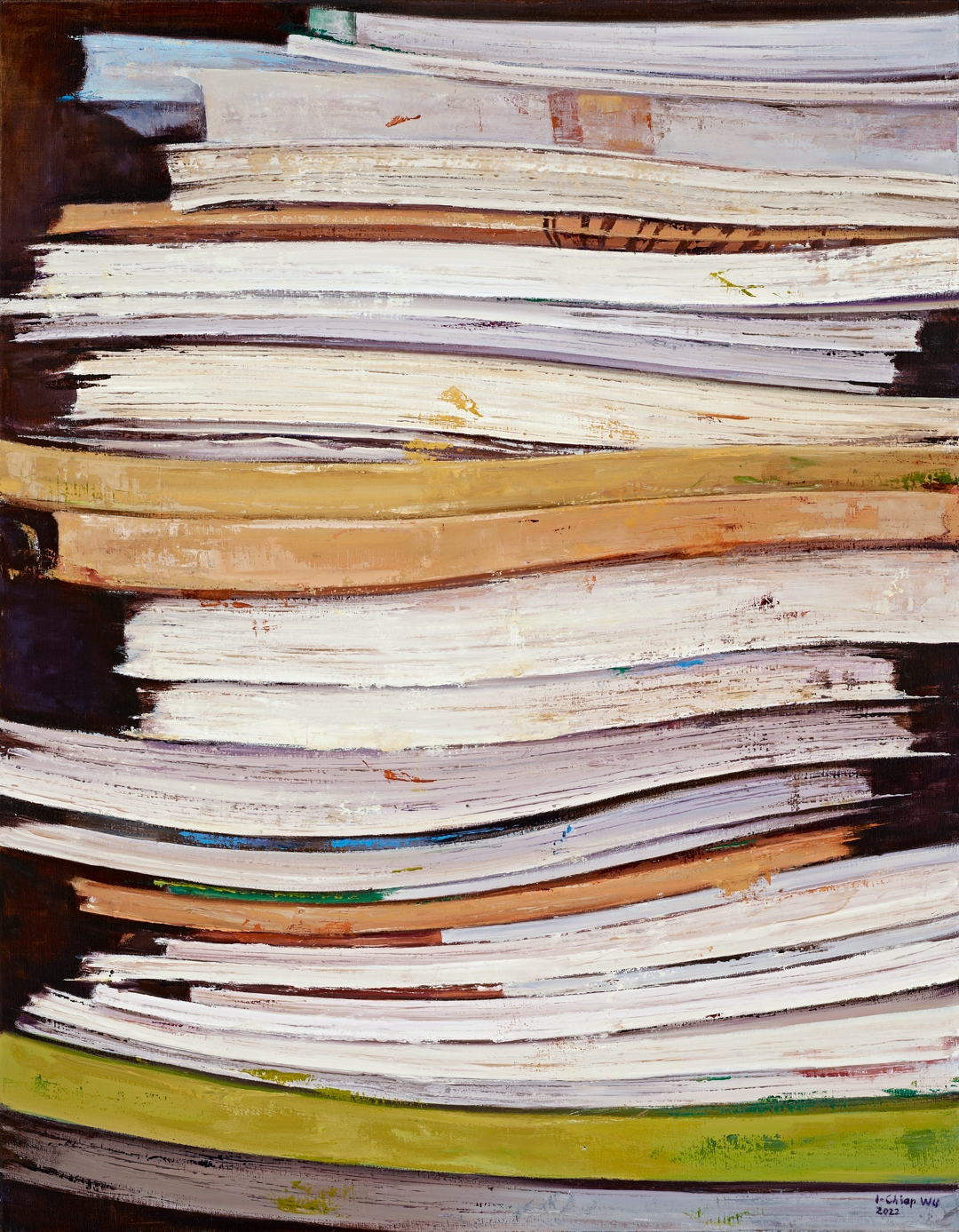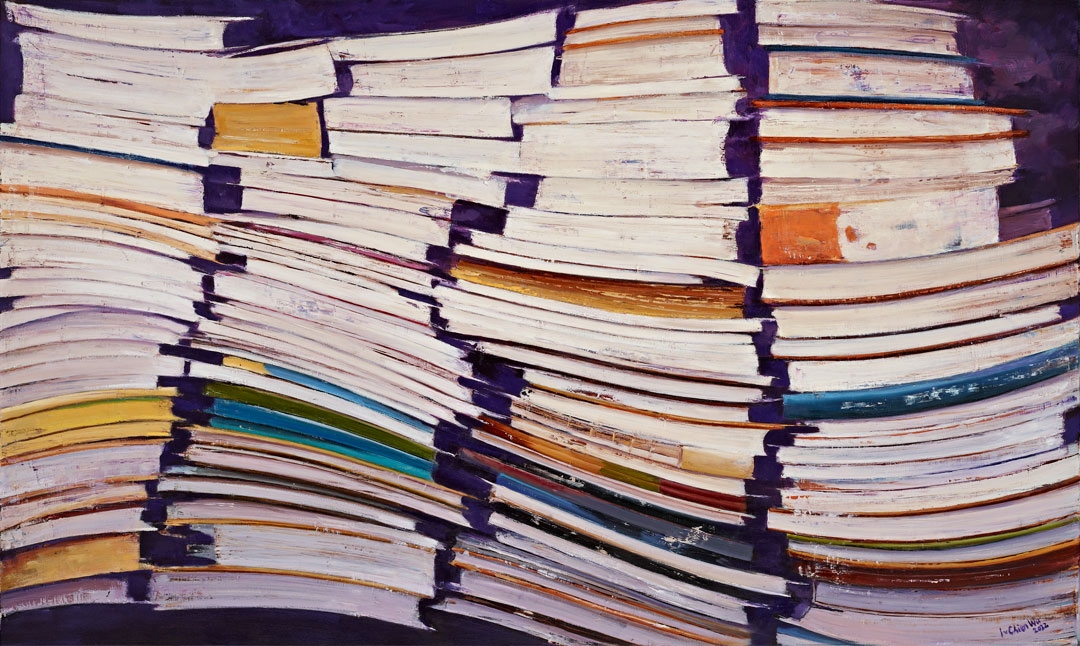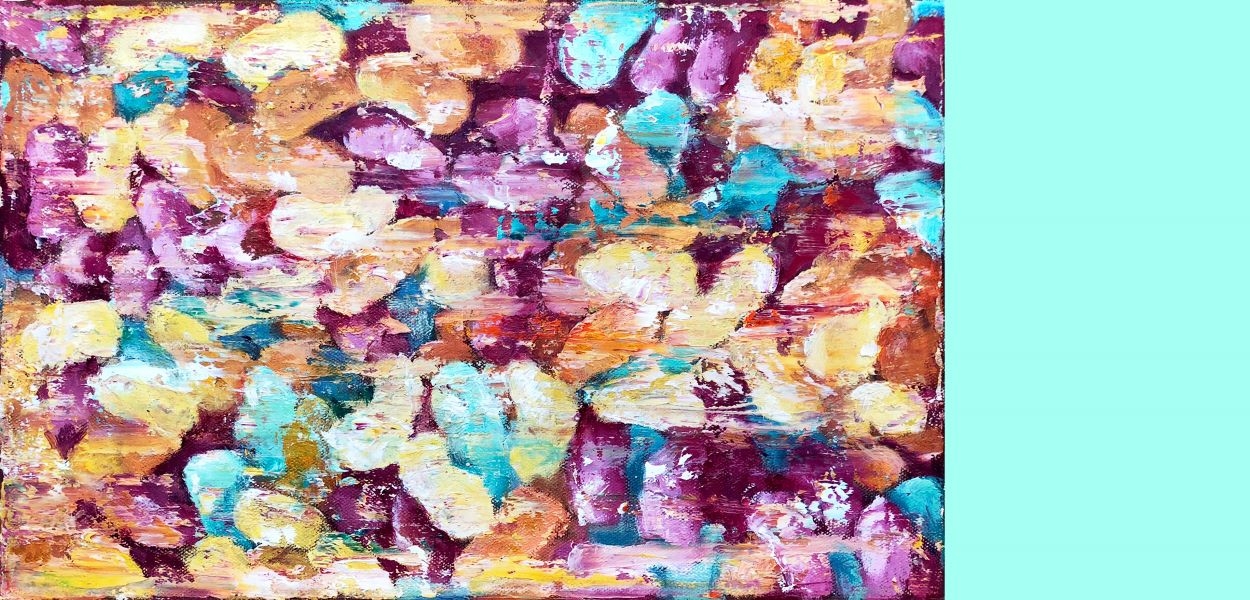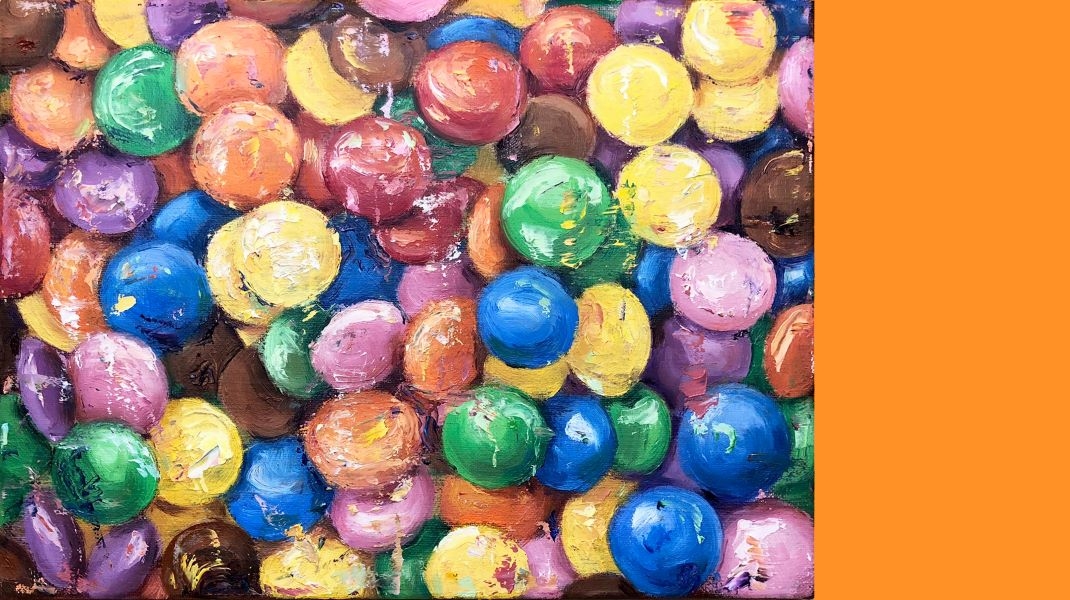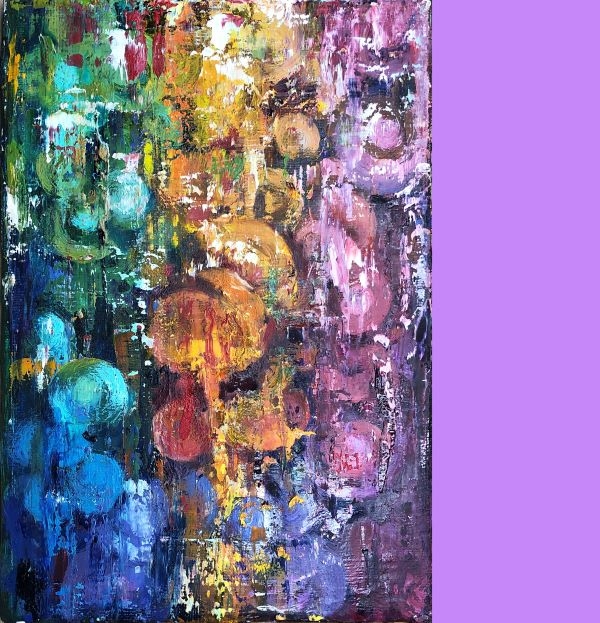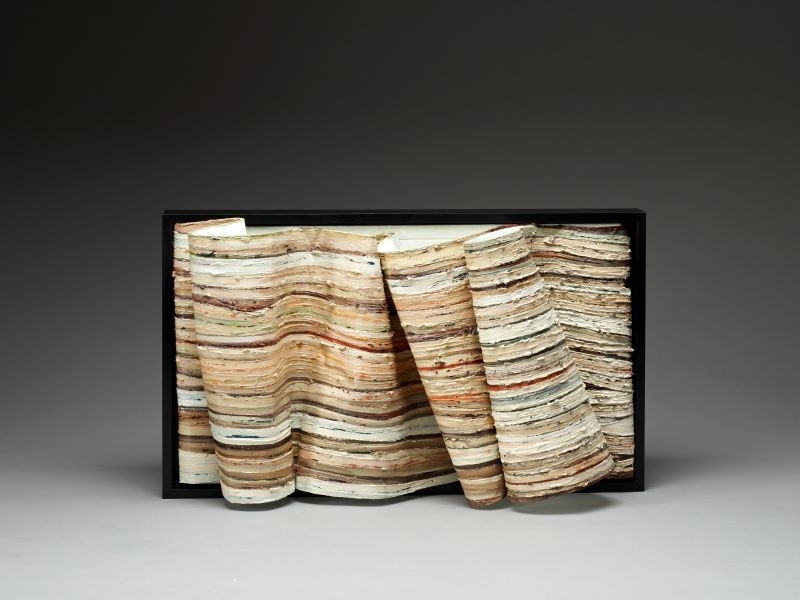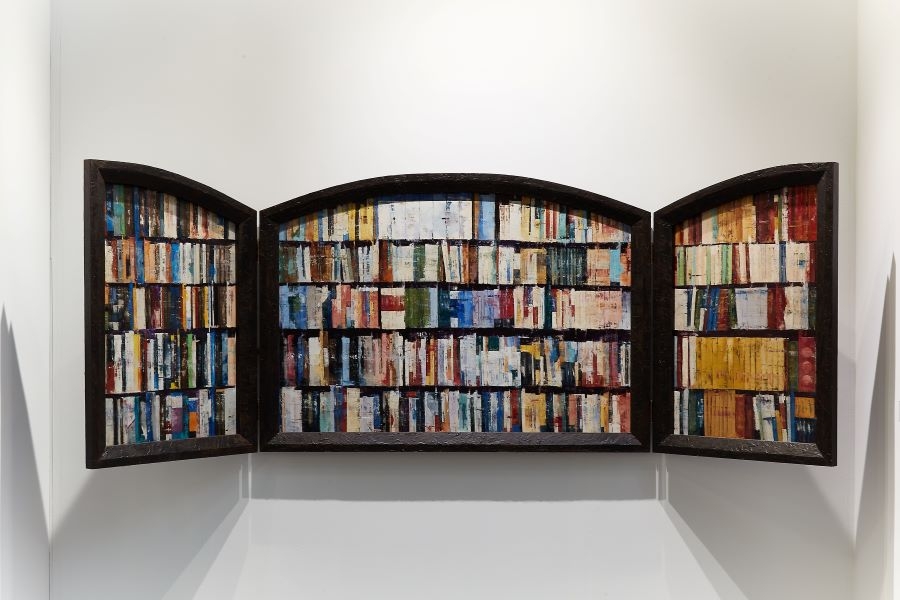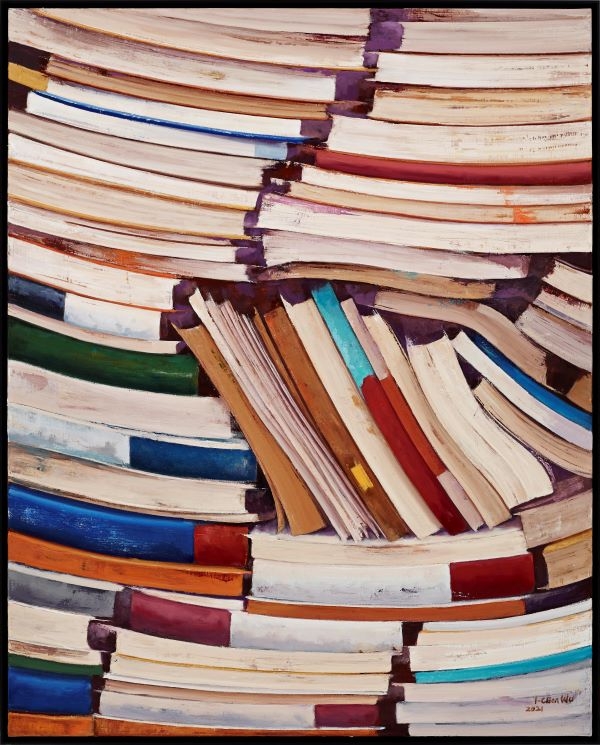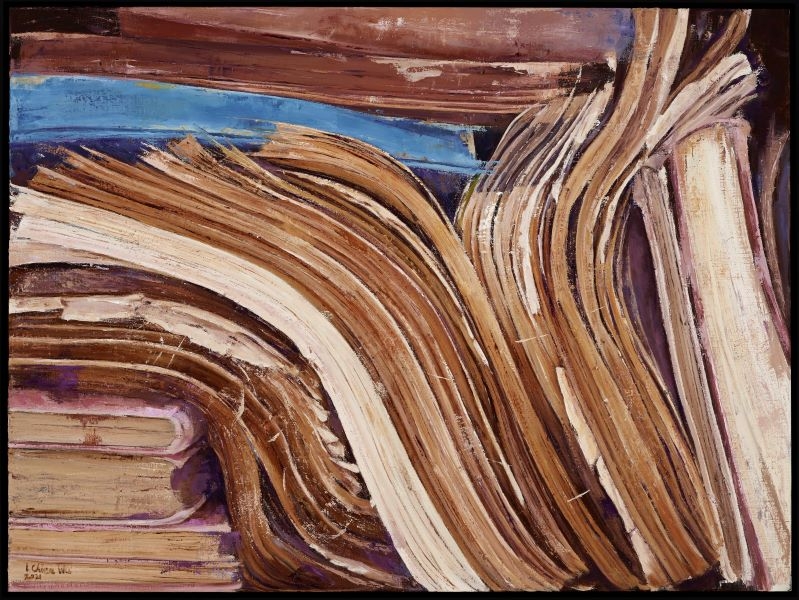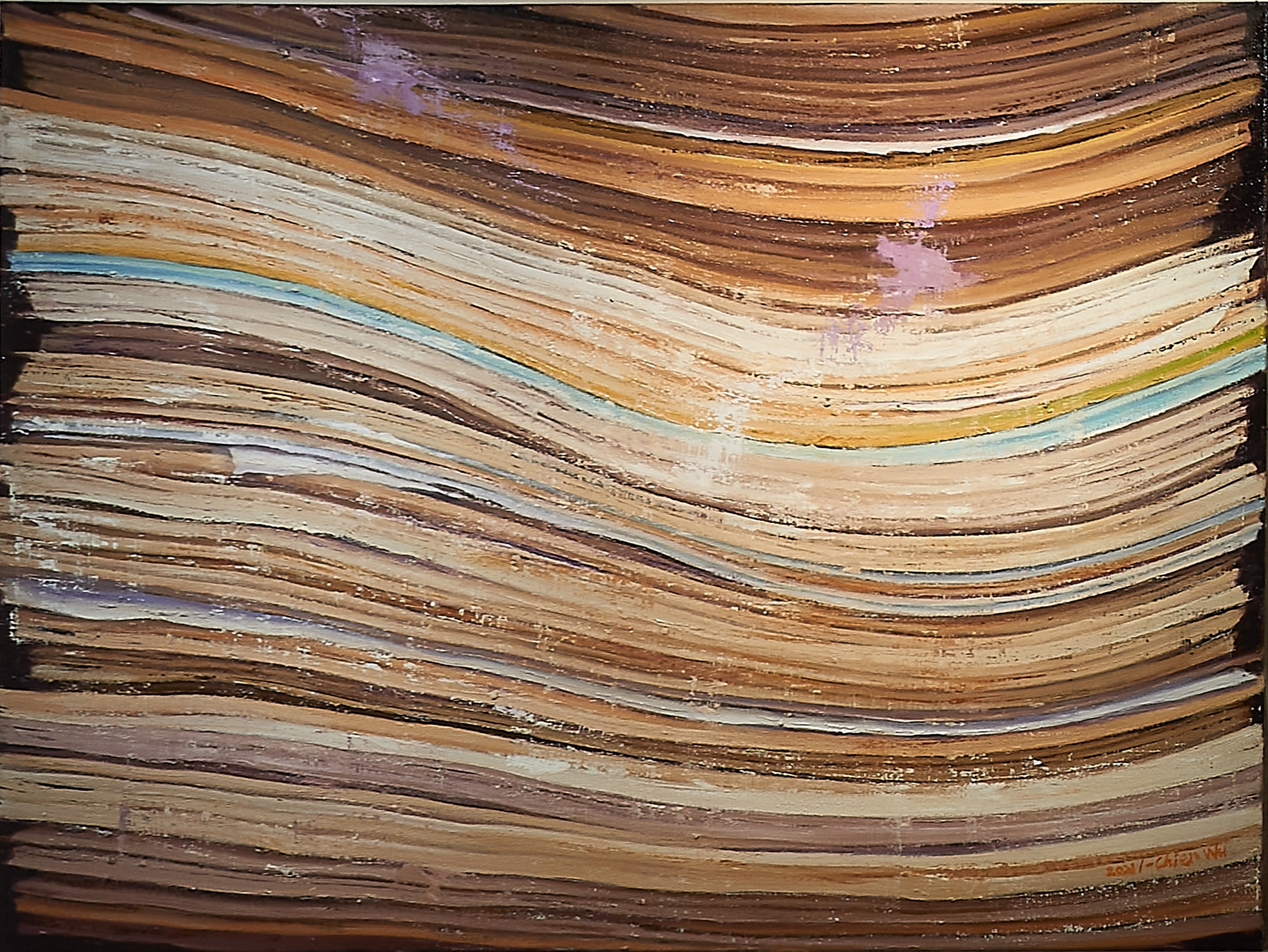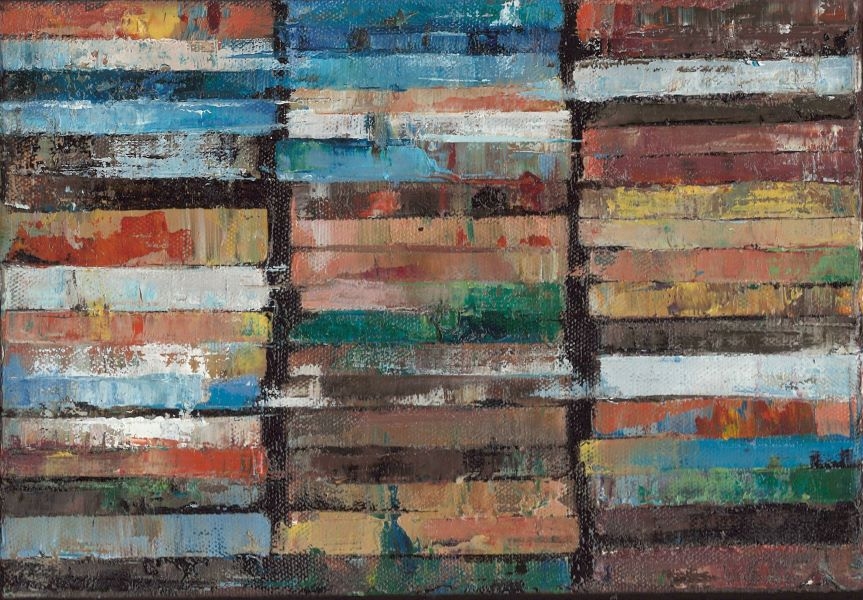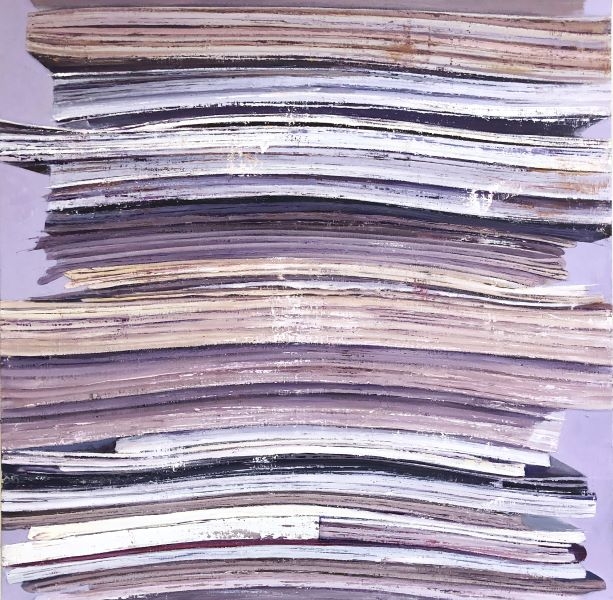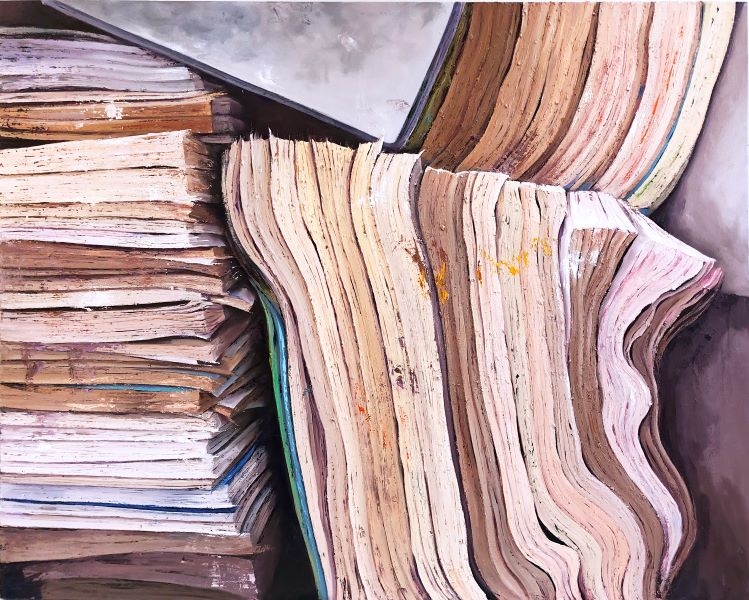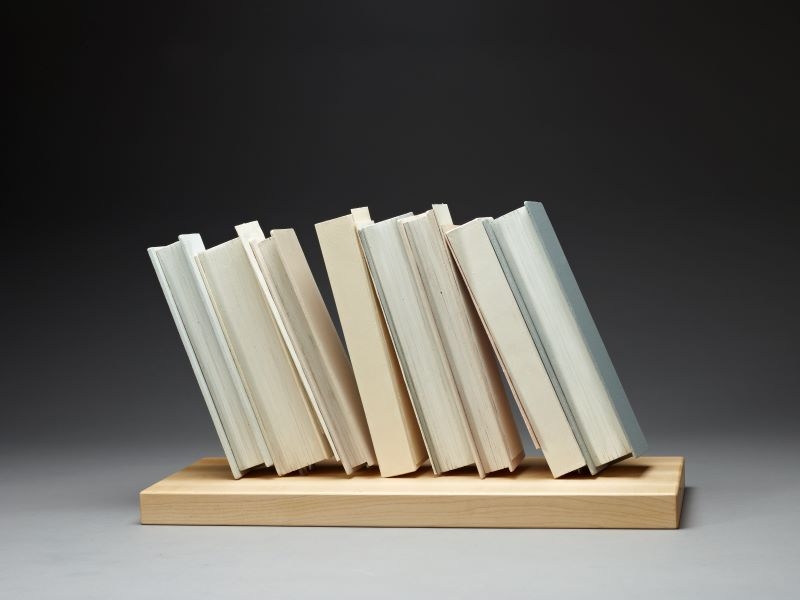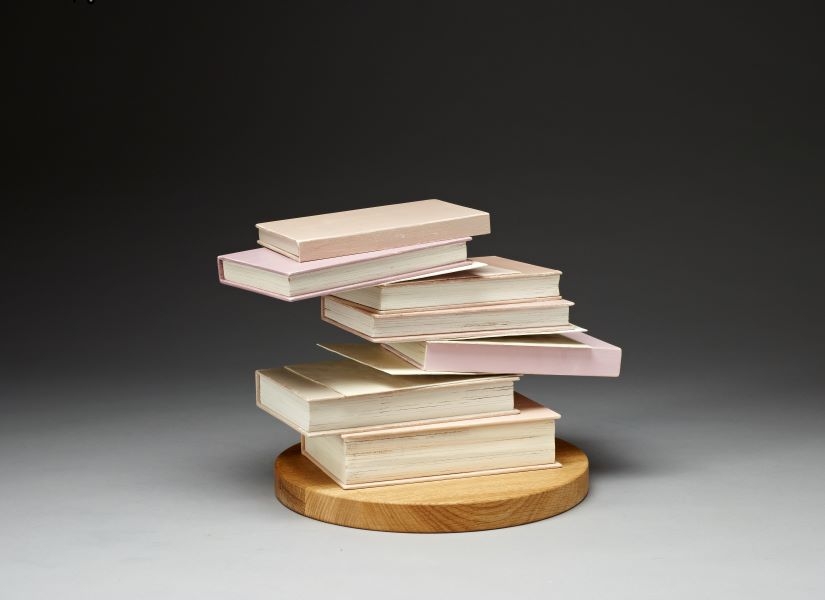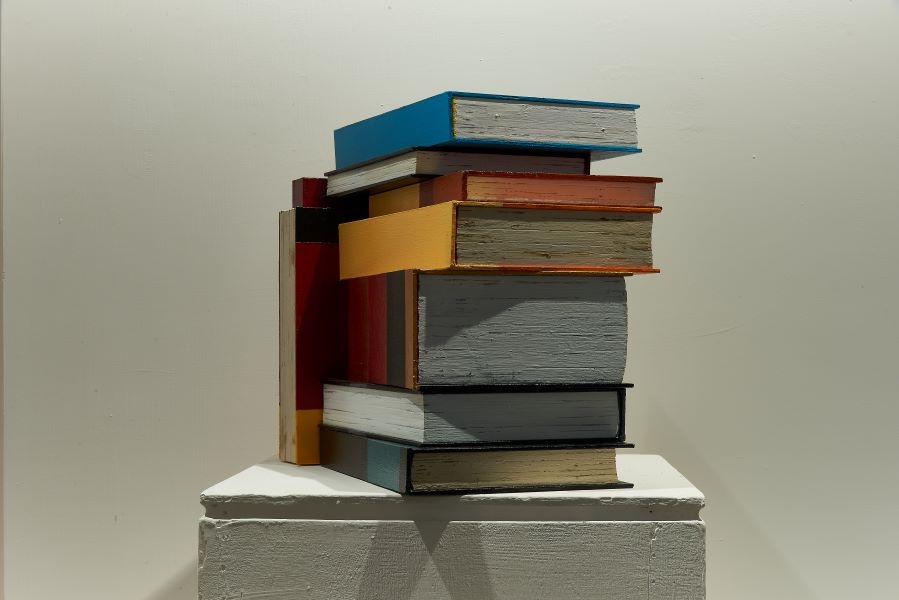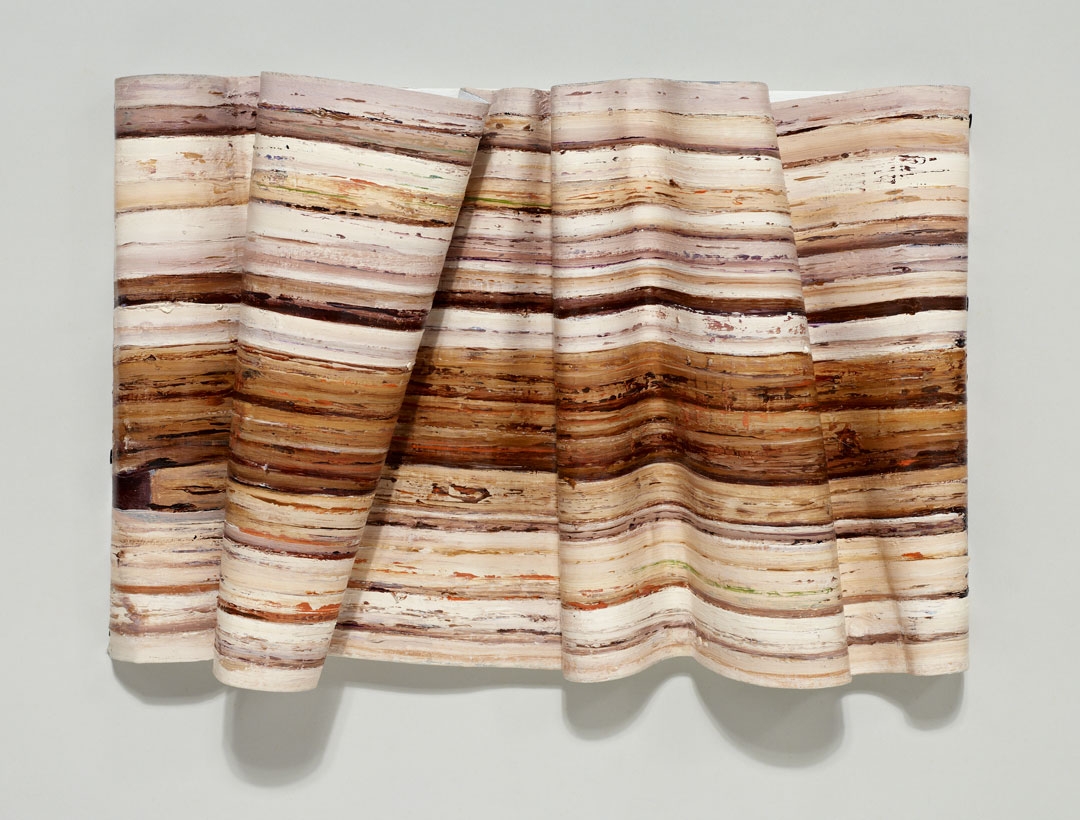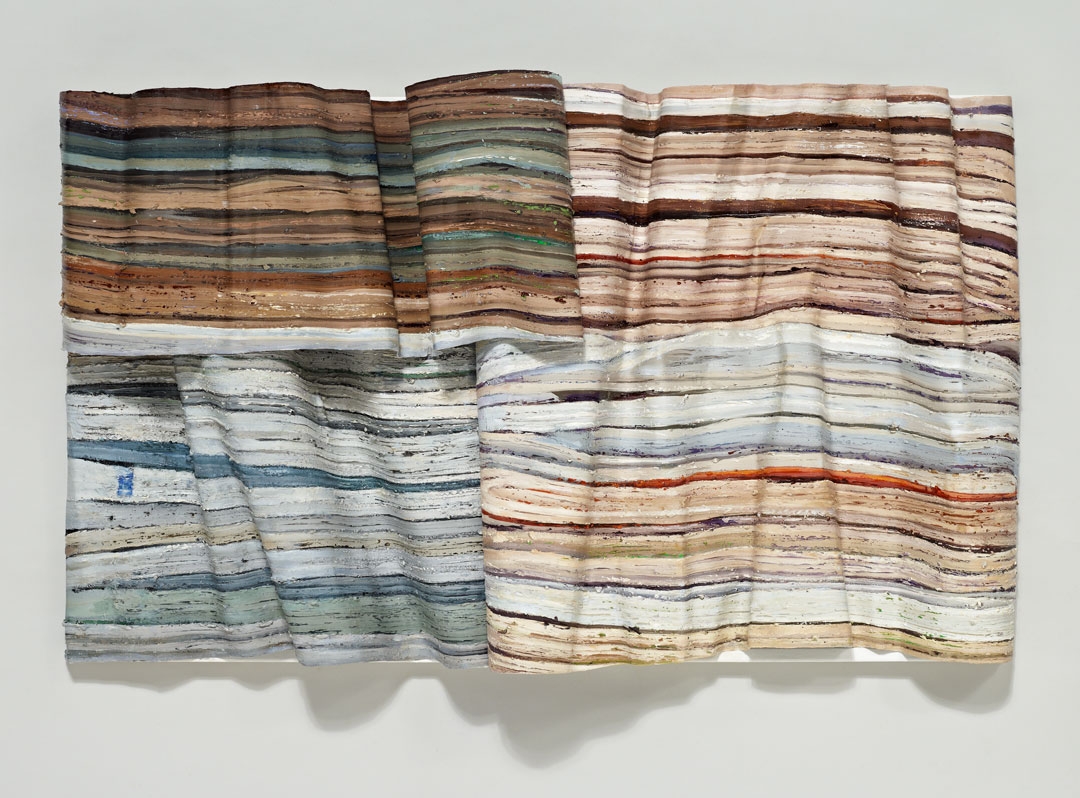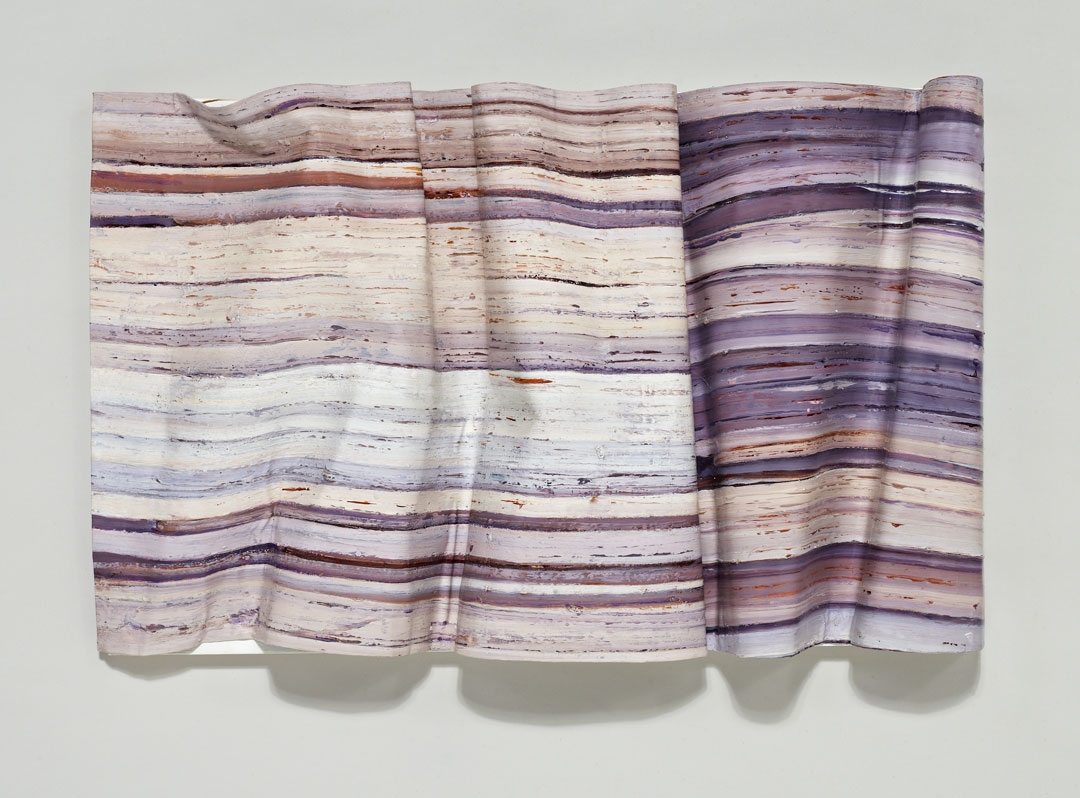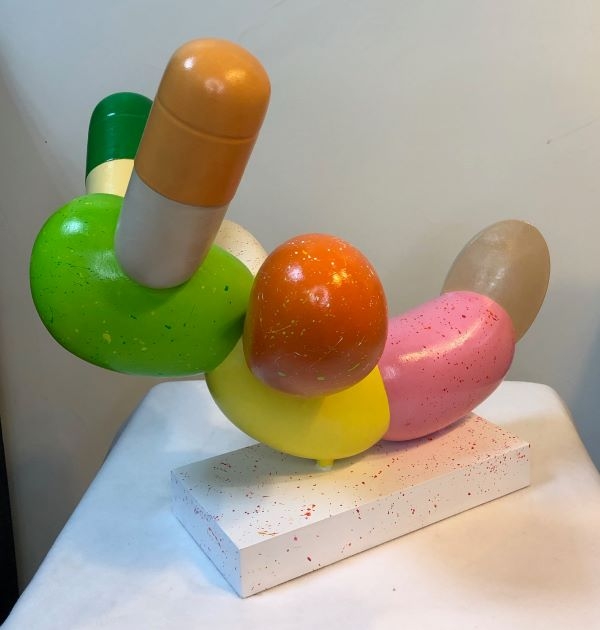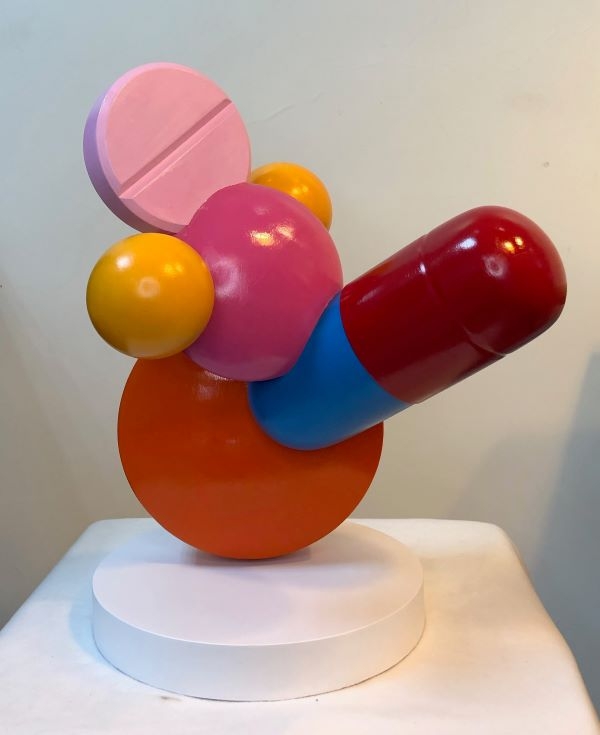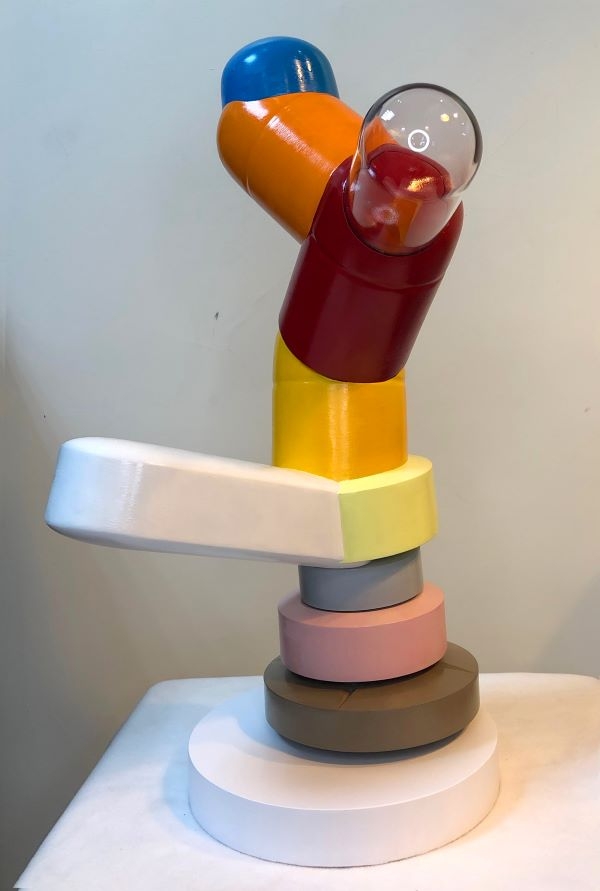國立台灣師範大學美術系畢業,美國紐約普拉特藝術學院電腦繪圖系碩士。曾任教於銘傳大學商業設計系。專業於藝術創作,長期關注公衛議題的社會意涵,曾在台北及韓國多次開展。
吳怡蒨以分層平行線條堆疊的形式,延續其擅長的顏料與現成物拼貼創作,將重複性的手工操作作為心理層面的探索,形成一種獨特的抽象美學。其繪畫具有極大的重複性和規律性,在彩紙拼貼及平行上色中進行各種組合與變化。然而,藝術家如此著迷於線條與色彩的堆疊,是想藉由重複操作一樣的水平條紋來模擬經常被重複閱讀又讀不完的訊息,探討當今資訊過多的擁塞感帶給人們的恐慌與焦慮,但又無法割捨訊息超載的複雜心情。藝術家試圖跳脫抽象繪畫為一種純理性、極簡的視覺造型,在有條理的抽象手法及線條增減繁複中,運用重複的水平線與豐富的顏色交織出複雜的情緒,一種看似隨性但又有某種強迫的偏執行為。吳怡蒨的抽象畫作,並非只是純粹形式語言的對話,也不似傳統抽象表現主義那般的偶發、即興。在重複手繪與拼貼的過程中,重新鋪陳架上繪畫情感“再敘述”的功能,試圖超越抽象形式的局限,展現出獨具一格的表現方式。
Wu’s paintings express an extreme sense of repetition and regularity. Her bright paper collages and parallel colors are executed in every kind of combination and variation. Captivated by the stacking of lines and colors, the artist strives to imitate the act of reading repetitive information that can never be fully read by repetitively constructing similar horizontal stripes. In this way, the work explores the complex mood in which congested sensations brought on by the excessive amounts of information today cause feelings of panic and anxiety, yet there is no way to extricate oneself from this information overload. The artist attempts to pull away from the rational, minimalistic visual forms of abstract painting. Through the use of repetitive horizontal lines and rich colors to interweave complex emotions, a seemingly casual yet also forced sense of paranoid behavior is expressed. Wu’s abstract paintings are not just a pure dialogue of form. They also do not resemble the sporadic improvisation of traditional abstract expressionism. In the repetitive process of painting and collaging, the artist re-establishes the “Reiterate” function that accompanies the sentiments of painting, while attempting to exceed the limitations of the abstract form, and presenting the artist’s personal and unique style of expression.
